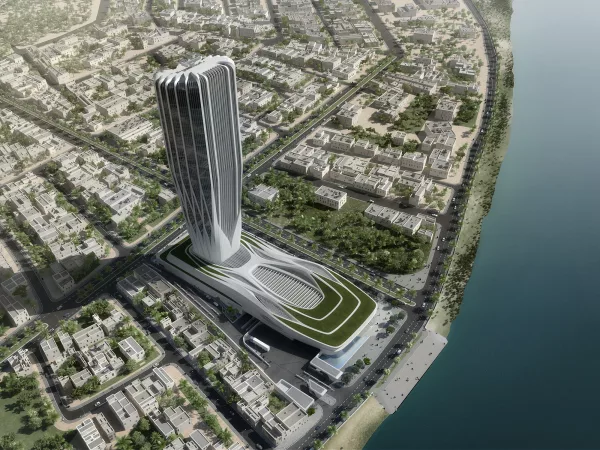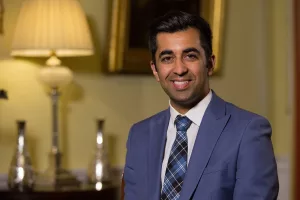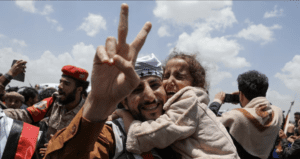March 2023 marked 20 years since the invasion of Iraq. Since US troops entered the country two decades ago, Iraq has been plagued with ineffective economic institutions, social unrest and political instability. Iraq’s history still affects all of its institutions, yet scholars say there is hope for the country. From everyday life, to its religious divides, to the effects of climate change, Iraq is changing. In some aspects, the country is slowly recovering from the damage that it endured for two decades. In others, however, new problems are emerging.
Historical background
When US forces withdrew from the Republic in 2011 after years of war and suffering, the country was not able to recover quickly from the damage. The war had been brutal, with over 200,000 civilians killed, making it seem like the US withdrawal would bring an end to the suffering. Despite this, the retreat did not bring prosperity to the country. Instead, it left a power and security vacuum; leading to Al-Qaeda’s uprising and civil war, and eventually, the Islamic State of Iraq and Syria (ISIS). The invasion also gave way to the Muhasasa system in 2003, consisting of sectarian quotas, which created deep-rooted divides amongst religious sects in Iraq. The sectarian violence that followed was mainly between the Shi’a Muslim majority and government, and the Sunni Muslim minority, and persisted after the US withdrawal.
Religious divides
In recent years, these religious divides have continued to affect the country, yet their severity is diminishing. Many Iraqis no longer follow religious leaders, and believe that religion has become “too politicized” and bigoted, according to The Economist. In addition, this year was the first in decades in which Sunnis and Shiites celebrated the start of Ramadan at the same time. In October 2019, citizens even took to the streets of Baghdad to protest against corruption, sectarianism, and the Muhasasa system. Yet the protests, the country’s largest in its recent history, ended in a government crackdown that killed 600 people.
This, despite being the most violent government relation in modern history, marked a pivotal point in Iraq’s recovery. The population itself finally seemed to be moving away from the religious and ethnic divides that plagued their country, and began a new era for the relationship between Iraq’s religious sects. In fact, recent conflicts have been inter-Shi’a issues rather than sectarian ones. The biggest challenge they face, however, is whether the government and its institutions will be able to distance themselves from religion and ethnic tensions as well.
Youth and Poverty
With one out of three people living below the poverty line, many of whom are young, Iraq faces a significant challenge with child poverty. Amongst the population aged 15 and 24, over a third are outside of the labor force and no longer being educated. As these issues disproportionately affect Iraq’s younger generations, many say they want to leave the country. Mayaar Haitham Falih, a Baghdad local interviewed by Al Jazeera, says that many of her classmates at university want to leave Iraq. “They always say, who would want to stay here?” she explains, a thought that many young nationals have due to poor job opportunities and poverty cycles. She, however, still has hope for the country. “There is progress to be made,” Falih states.
Climate issues
One of the most pressing socio-economic issues in the country, however, is completely unrelated to the US invasion. Global warming combined with Iraq’s climate has the potential to have devastating consequences. Due to the soaring temperatures expected, the amount of farmland with fertile soil is predicted to decline. If this occurs, it would cause the mass migration of tens of thousands into Iraq’s urban areas and put inflationary pressure on resources. In addition, the heat would cause desertification of the southern marshes, and deplete the country’s water supply. Iraq, along with other countries that rely on the Tigris and Euphrates for water supply, will face severe water scarcity. These issues will cause the forced migration of many, diminish food and water resources and endanger urban institutions.
Are things looking up?
The country has various economic and political issues, many of which are ingrained in the population since the invasion. However, after 20 years, some think that a new era of hope is settling across the nation. This is reflected heavily in the physical layout of the country. Baghdad Airport Road, or “Route Irish,” was among the world’s most dangerous streets. From snipers to large convoys, it was heavily militarized and menacing for years. Today, it is surrounded by lush vegetation, new architecture and university campuses. Furthermore, the blast walls that separated Baghdad for years came down in 2019. These had protected buildings and people from wars and violence and were necessary from the invasion to the defeat of ISIS in 2016. Both the fall of the walls and the university-lined road suggest a significant improvement in safety.

Photo by Zaha Hadid Architects Media Archive.
As for quotidian life, citizens notice the country slowly moving forward. The central bank erected a new tower overlooking Baghdad and a new ring road will be built for the city. Furthermore, Shi’a militias are still present but are no longer a constant threat. The cities, therefore, feel much safer for citizens to be in, especially for women. Women can now be unveiled on the streets with little fear of militias, and 74% of the population said they feel safe walking alone at night; an all-time high. In addition, tourism is on the rise, led by Western companies who intend on bringing popularity back to Iraq’s unique archeology. Thus, many Iraqis are hopeful for the country’s future. These changes, although small, are “signs that life is returning to Iraq,” as stated by The Economist.
Conclusion
Iraq has struggled with violence, sectarianism, poverty and corruption for years. In many ways, its history still affects its economy and politics to this day. Both the US invasion and its consequences riddled the country with terror. Iraq suffers from deep-rooted sectarian divides, poverty in the young and most promising population, and the dawning effects of global warming. Yet in some ways, Iraq is improving as well. After two decades of war, the country is finally showing signs of slow, but permanent recovery. Many feel hopeful about the country’s future. Nevertheless, it still has a long way to go.
Featured photo by: Code Pink






